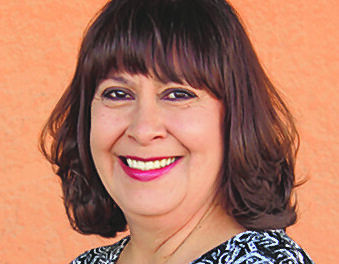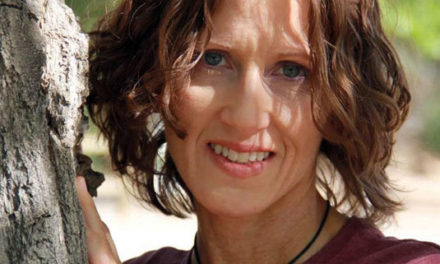Soil & Water Conservation
The September arrival of monsoon moisture to the Isleta reach of the Middle Rio Grande Valley is a welcomed late addition to the unique story that is the 2023 water year.
After a July and August with almost no rainfall, the phrase I kept hearing was, “Whew, these monsoons are sure better late than never!” It made sense, as come mid-summer the water use community had been informed that monsoons would be the primary source of late season irrigation water, while there were predictions that the Rio Grande was likely to go dry through the Albuquerque reach for a consecutive year (something not seen for 40 years).

Andrew Hautzinger
Yes, after a dry July that registered as the hottest month on record, these late season rains are well received and add nicely to the story of 2023, a real roller-coaster of a water year.
A brief recap of this unique topsy-turvy irrigation season recalls the Rio Grande going from predicted severe shortfalls from a low snow pack in the early months of 2023, to an almost unprecedented period of months where the river was swollen with higher than average flows, to recent weeks where pernicious drought conditions seemed to be back in force (awaiting rescue by the always mercurial monsoon rains).
What a year it’s been. People will long remember how on May 14, 2023, high flows contributed to a sinkhole that undercut the Los Lunas N.M. 6 bridge, collapsing the sidewalk with Sergio Marquez with his son, Felix, nearby only narrowly escaping drowning (owing to the bravery of passersby Heaven Chavez-Rodriquez and her mother, Jacque Rodriquez).
These higher flows were due to late-spring snows in the highlands, a cooler than average May and June, and a host of contributing challenges associated with water storage and compliance with the Rio Grande Compact (established in 1938 between the states of Colorado, New Mexico and Texas).
The Rio Grande Compact is a prominent actor on the stage (and found to be a little inscrutable by many), as the compact restricts many things, including the storing of water for most of New Mexico’s summer irrigators, unless Elephant Butte reservoir is at or above a 400,000 acre-foot volume of “native Rio Grande” water (water that naturally falls within the basin) — noting that the butte’s current volume is 358,644 acre-ft (and that New Mexico’s debt to the Compact was 93,000 acre-feet at the end of 2022).
Water storage is a key and paramount consideration. From another prominent actor on the stage, the Middle Rio Grande Conservation District, we know that a lack of upstream storage is a significant constraint on operations, especially during times of drought … and during times when dam repairs are needed. MRGCD estimates that repairs required at their El Vado reservoir won’t be done until as late as 2027, so this facility (built by MRGCD in 1935 largely to store irrigation water) is off line for the time being. This, with the high flows of the late spring and early summer, added to the vexation of local farmers who felt their parched farmlands could make use of the swollen river water, only to understand that the water was already spoken for (largely by our downstream Compact neighbors in Texas).
On July 1, another important player on the stage, the U.S. Army Corps of Engineers, ceased high releases into the river (born from the late snow pack), reducing flow levels in the river, allowing the slow draining of the upstream reservoirs and flooded off-channel areas that have held water since the spring.
Meanwhile, during July and early August MRGCD used the full volume of its San Juan-Chama project water (tributary water sourced from the Colorado River and not considered “native Rio Grande” water in compact accounting). Come late August, MRGCD’s CEO Jason Casuga was letting people know that the San Juan-Chama waters that had been representing about 40 percent of the flow in the river and were now depleted and monsoon moisture would likely be needed to support late-season irrigations (Albuquerque Journal, Aug. 20, 2023).
So now, better late than never, the late season monsoons have arrived (in their always spotty fashion), helping local farmers and those charged with protecting the ecological function of the river and her floodplain.
These late rains come after a unique year, where early predictions of continued drought gave way to river banks swollen for weeks-on-end, which then turned to the hottest July on record with negligible rainfall through August, raising real fears of present drought.
Or, as my friend, Anne Marken, MRGCD water operations manager, told me, “Our spring predictions and preparations really won’t mean much most summers, unless we can manage within the compact and gain more storage at El Vado reservoir and elsewhere.”
(Andrew Hautzinger is the district director of the Valencia Soil and Water Conservation District.)

Andrew Hautzinger, guest columnist
Andrew Hautzinger has been the district director for the Valencia Soil and Water Conservation District since 2020. Prior to that, he was a volunteer VSWCD board member for 12 years and spent many years volunteering at the Whitfield Wildlife Conservation Area.
Hautzinger has a bachelor of science in watershed sciences from Colorado State University. He worked for more than 27 years as a federal hydrologist working for agencies within the Department of Interior including the U.S. Bureau of Land Management, U.S. National Park Service, and for the final 20 years of his career, with the U.S. Fish and Wildlife Services’ National Wildlife Refuge System.
















